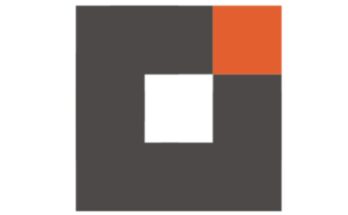AnyDesk: Revolutionizing Remote Access and Support
In the modern digital era, the need for fast, secure, and reliable remote access software has never been more critical. As businesses embrace remote work and individuals require support across distances, tools like AnyDesk have emerged as essential solutions. AnyDesk, a remote desktop application developed by AnyDesk Software GmbH, has become one of the leading choices for IT professionals, businesses, and casual users alike. This article explores the features, benefits, use cases, and considerations of using AnyDesk.
What is AnyDesk?
AnyDesk is a proprietary remote desktop application that enables users to connect to and control other devices remotely. Whether you’re providing technical support, accessing files from another location, or managing multiple systems, AnyDesk allows you to do so with ease and minimal latency. It works across various platforms including Windows, macOS, Linux, Android, iOS, and more.
Founded in 2014 in Stuttgart, Germany, AnyDesk was developed to address the common limitations in remote desktop tools — such as slow connection speeds, complicated interfaces, and poor video quality. Its custom-built DeskRT codec is a key innovation, designed to deliver high-quality visuals and minimal lag even on low-bandwidth connections.
Key Features of AnyDesk
1. High Performance and Low Latency
One of AnyDesk’s biggest advantages is its performance. Thanks to the DeskRT video codec, it compresses and transfers image data efficiently, allowing real-time responsiveness. This is particularly useful for tasks that involve multimedia content or software with rich graphical interfaces.
2. Cross-Platform Support
AnyDesk supports a wide range of operating systems: Windows, macOS, Linux, FreeBSD, iOS, Android, Raspberry Pi, and even Chrome OS. This flexibility ensures users can access or offer support across virtually any device.
3. Ease of Use
The user interface is clean and intuitive. Users can install the software or run it as a portable app without installation. Connecting to another device only requires the target machine’s AnyDesk address or alias.
4. Unattended Access
For administrators managing remote systems or individuals who need to access their devices without another person present, AnyDesk allows for unattended access. Users can set passwords for such sessions, with optional security settings for greater control.
5. File Transfer
File sharing is streamlined through a simple drag-and-drop interface or a built-in file manager. This makes it easy to send documents, software installers, or logs between devices during a session.
6. Session Recording
AnyDesk allows sessions to be recorded — a helpful feature for training, auditing, or documentation purposes.
7. Customizable Interface for Businesses
AnyDesk offers white-labeling and customization options for companies. This enables them to brand the software with their logos, colors, and personalized settings — a major plus for IT support providers.
8. Banking-Standard Security
Security is a priority for AnyDesk. It uses TLS 1.2 encryption and RSA 2048 asymmetric key exchange to ensure that data transmitted during remote sessions is protected. Additionally, users can whitelist specific devices and set up permissions to restrict access.
Use Cases
1. Remote Technical Support
One of the most common uses of AnyDesk is remote IT support. Support technicians can access a client’s device to troubleshoot software issues, install updates, or guide users through processes without needing to be physically present.
2. Remote Work and Collaboration
With the rise of remote work, professionals often need to access office computers from home or vice versa. AnyDesk allows seamless access to files, software, and internal systems, keeping workflows uninterrupted.
3. Education and Training
Educators and trainers can use AnyDesk to provide live demos, walk-throughs, or one-on-one assistance. The session recording feature also helps in creating tutorials and references for later use.
4. Server and System Administration
IT administrators can manage and maintain servers or networks across multiple locations without leaving their desks. AnyDesk’s support for headless devices and command-line installation further simplifies enterprise-level deployments.
5. Personal Use
Individuals use AnyDesk to access their home computers while traveling, assist family members with tech issues, or transfer files between their devices.
Advantages Over Competitors
While there are several remote desktop applications on the market — such as TeamViewer, Chrome Remote Desktop, and Microsoft Remote Desktop — AnyDesk offers distinct advantages:
• Smaller File Size: The AnyDesk installer is lightweight, usually under 5MB, making it quick to download and launch.
• Superior Performance on Low Bandwidth: DeskRT provides better visuals and response times even with limited internet connections.
• Affordable Pricing: For individuals and small businesses, AnyDesk offers competitively priced plans compared to some enterprise-focused alternatives.
Pricing and Plans
AnyDesk offers a free version for personal use and several paid plans for businesses:
• Solo: Aimed at single users, offering basic remote access functionality.
• Standard: Ideal for small teams, with multiple user accounts and device management features.
• Advanced: For larger organizations, includes session management, custom clients, and integration with directories.
• Enterprise: Tailored to the needs of corporations with advanced security, deployment, and customization features.
All plans include commercial licensing, unlimited endpoints, and a variety of permission and access controls.
Security Considerations
While AnyDesk is secure, users should remain cautious about scams and unauthorized access. Some scammers trick victims into granting remote access under false pretenses. To stay safe:
• Never give access to unknown users.
• Set strong passwords and enable two-factor • Regularly check the connection logs and access permissions.
AnyDesk also allows users to restrict incoming connections to known devices only, ensuring additional protection.
Conclusion
AnyDesk has carved a niche in the world of remote desktop software thanks to its performance, ease of use, and robust feature set. Whether for business or personal use, it offers a reliable and secure platform for remote access, support, and collaboration.
As remote work continues to grow and digital connectivity becomes more crucial, tools like AnyDesk will only gain more relevance. Its adaptability, cross-platform support, and emphasis on performance make it a top choice for users who value speed, simplicity, and security in their remote desktop solutions.



